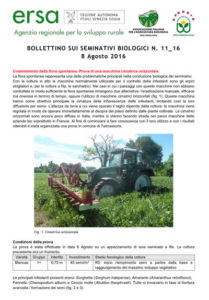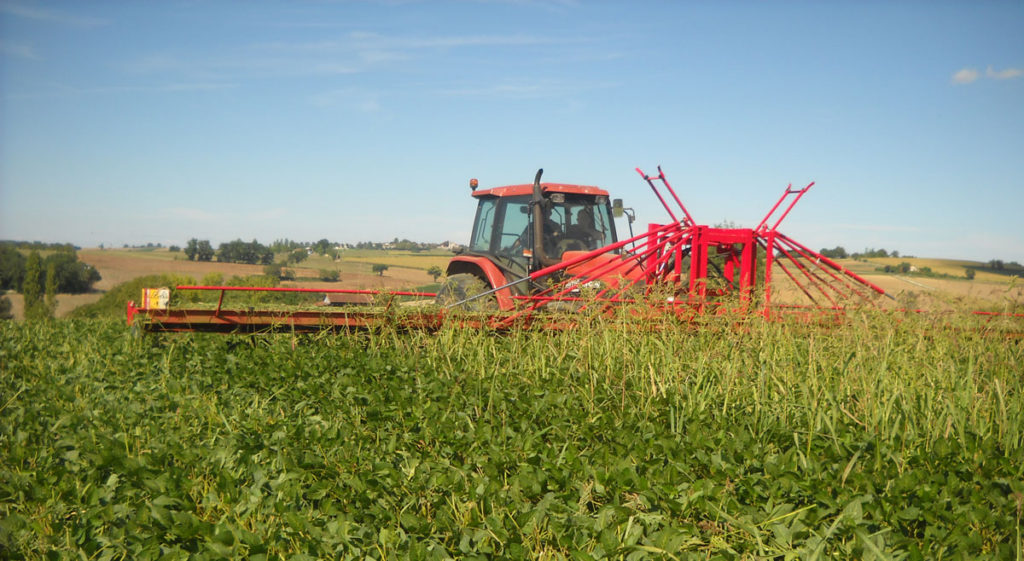ARTICLE PUBLISHED ON: ORGANIC ARABLE CROP REPORT N. 11/16 del 8 Agosto 2016
Containment of spontaneus flora. Horizontal weed trimmer machine test.

Spontaneous flora represents one of the principal problem for organic farming. Nowadays the typical machines used for weed control are chain harrows and weeders for row crops. In those cases where the traditional machines have not sufficiently controlled the spontaneus flora two options remain: manual uprooting, efficient but expensive in terms of time, or with horizontal weed trimmer machines.
The main purpose of these machines is to cut weed inflorescences, avoiding their seed spreading.
The working height depends on the crops: it’s possible to adjust the cut height just over the crops top.
These horizontal machines are not yet widespread in Italy while are more common in organic farms mainly in France. In order to know their use and achievable results a fild test has been arranged in Talmassons.
Test conditions
Test has been carried out on August 6th on a soya crop sown in rows. The previus crop was wheat.
Variety: Blancas
Group: 1+
Row spacing: 0.75 m
Seed investment: 45 seeds/m2
Phenological crop status: R5: beginning of seeds filling from the base and reaching the maximum vegetative development.
The principal weeds were: Sorghum halepense, Amaranthus retroflexus, Chenopodium album, Abutilon theophrasti. All the weeds were in flowering phase/ seeds formation.
Tested machine
The horizontal weed trimmer machine was built by Meneguzzo company in Castel Guelfo di Bologna Italy. The 6 metres working length model has horizontal rotating knifes. The rotating knifes are driven by a pulley system that take the motion from a hydraulic motor. The suggested working speed is between 3 and 6 km/h depending on weeds density. The machine can be installed front or back. For more informations consult the builders web site www.meneguzzo.eu

Test results
The machine is characterized by a simple disign, easy of use and control. It has proven to be able to cut cleanly all the weeds top that towered on the crop. Especially for annual dicotyledon, the cut can prevent their diffusion. Due to the different rates plants grow, a couple of cutting interventions could be necessary.
The second instant and positive effect of the cutting action on the crop is less weed competition for light and water. The machine can be used for other different crops. In our case it could be used for small-grain cereals to prevent the spread of wild oats.
The machine has also been used on a soy cultivation where the main weeds was sunflower. The cutting machine has almost completely eliminated all the flower heads in just one passage.

